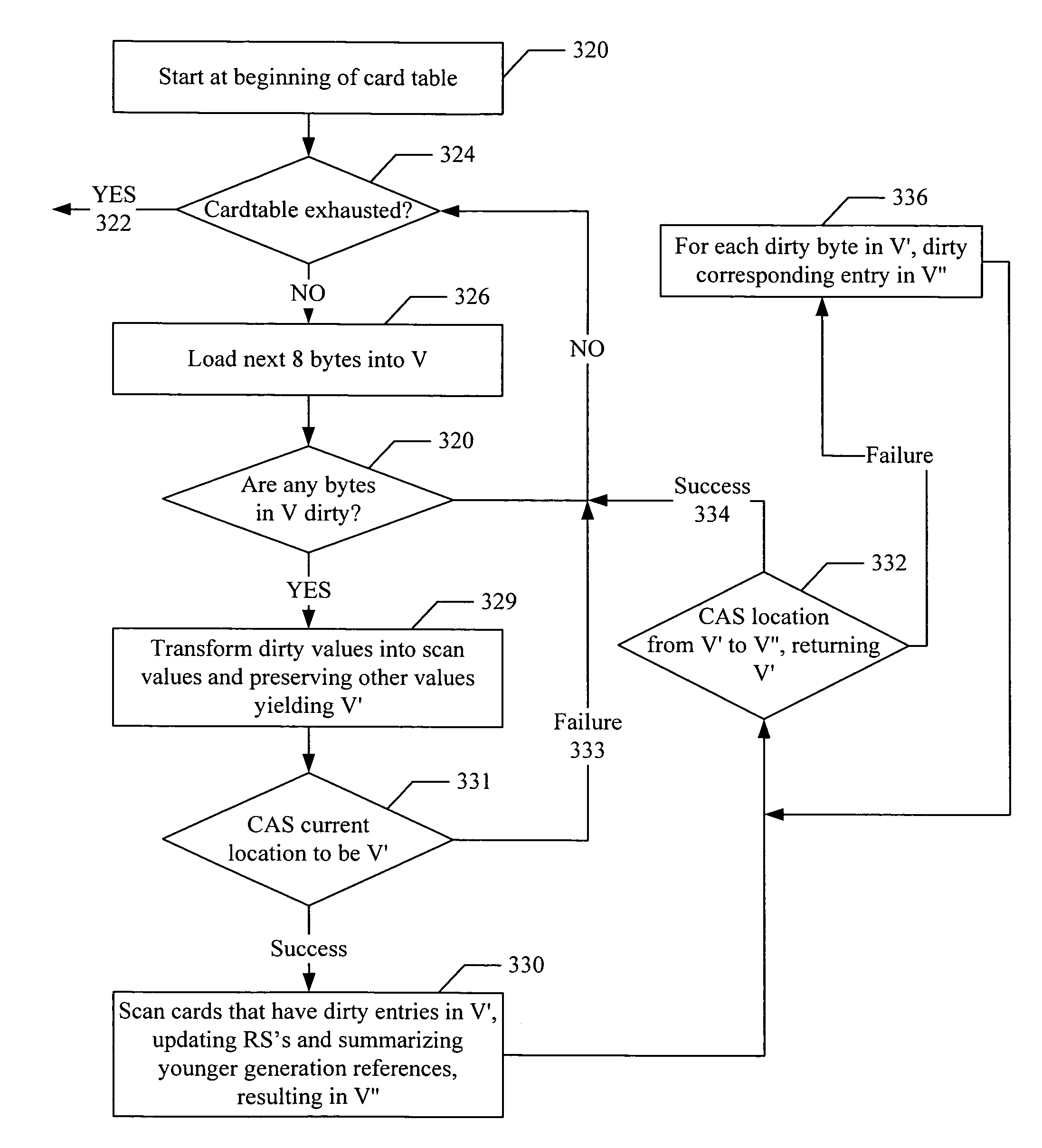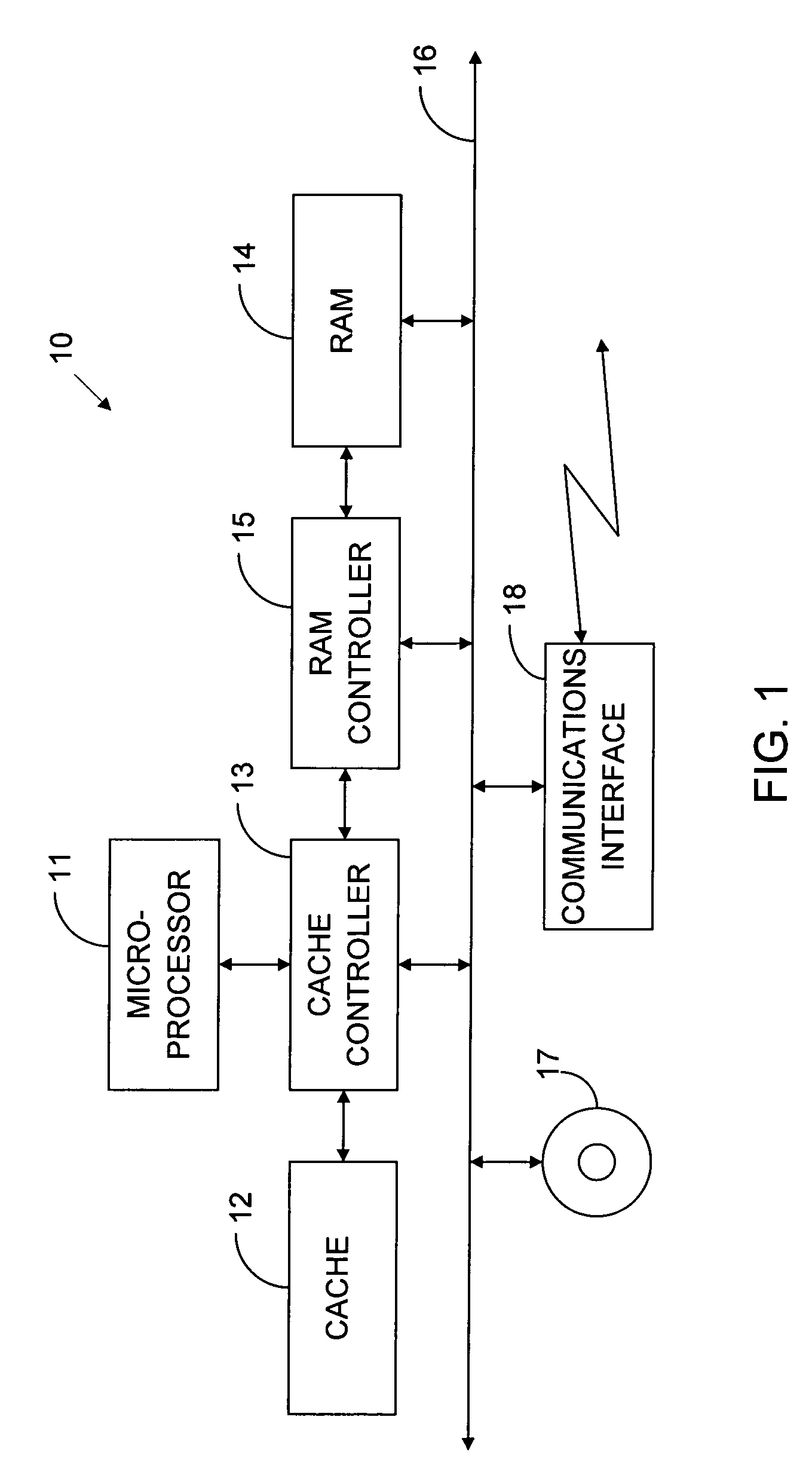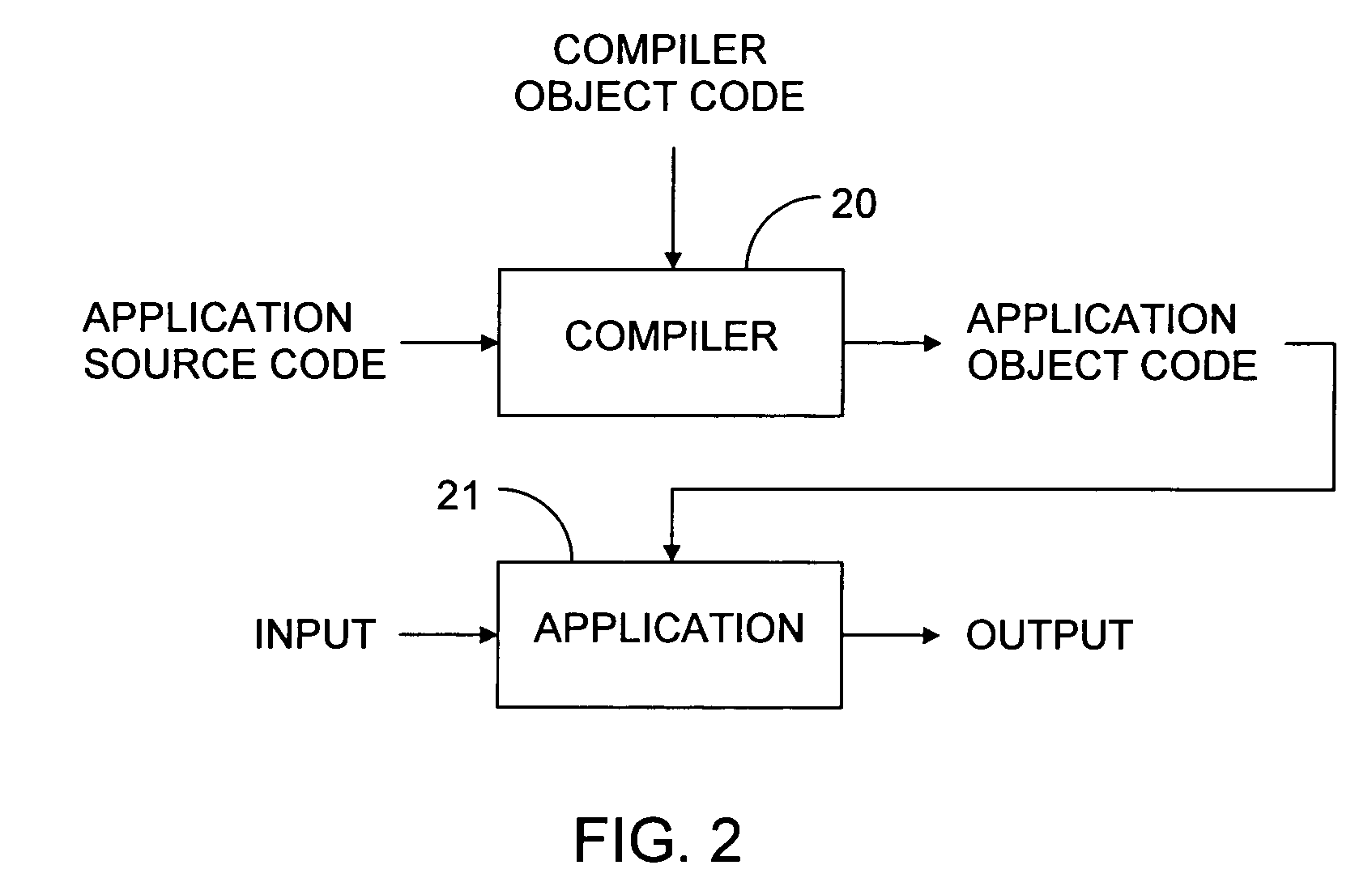Concurrent incremental garbage collector with a card table summarizing modified reference locations
a garbage collector and card table technology, applied in the field of memory management, can solve the problems of increasing the memory requirements of the system to exceed the system's available memory, consuming a lot of effort, and wasting time on the task of allocating memory to data objects
- Summary
- Abstract
- Description
- Claims
- Application Information
AI Technical Summary
Benefits of technology
Problems solved by technology
Method used
Image
Examples
Embodiment Construction
[0116]The illustrated embodiment employs a way of implementing the train algorithm that is in general terms similar to the way described above. But, whereas it was tacitly assumed above that, as is conventional, only a single car section would be collected in any given collection interval, the embodiment now to be discussed may collect more than a single car during a collection interval. FIGS. 13A and 13B (together, “FIG. 13”) therefore depict a collection operation that is similar to the one that FIG. 8 depicts, but FIG. 13 reflects the possibility of multiple-car collection sets and depicts certain optimizations that some of the invention's embodiments may employ.
[0117]Blocks 172, 176, and 178 represent operations that correspond to those that FIG. 8's blocks 102, 106, and 108 do, and dashed line 174 represents the passage of control from the mutator to the collector, as FIG. 8's dashed line 104 does. For the sake of efficiency, though, the collection operation of FIG. 13 includes...
PUM
 Login to View More
Login to View More Abstract
Description
Claims
Application Information
 Login to View More
Login to View More - R&D
- Intellectual Property
- Life Sciences
- Materials
- Tech Scout
- Unparalleled Data Quality
- Higher Quality Content
- 60% Fewer Hallucinations
Browse by: Latest US Patents, China's latest patents, Technical Efficacy Thesaurus, Application Domain, Technology Topic, Popular Technical Reports.
© 2025 PatSnap. All rights reserved.Legal|Privacy policy|Modern Slavery Act Transparency Statement|Sitemap|About US| Contact US: help@patsnap.com



